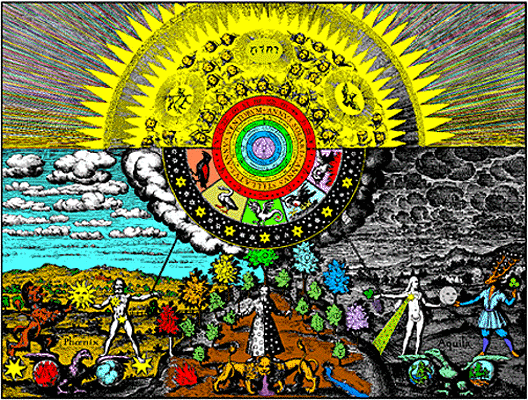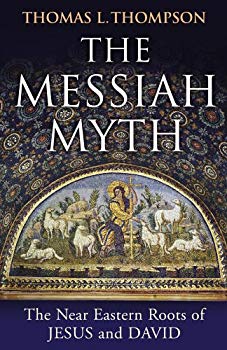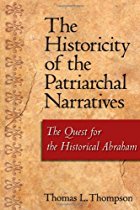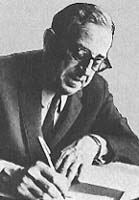Having seen the ratio of ex-fundamentalists to mythicists with liberal church backgrounds it is amusing to review Maurice Casey’s mythic theme. Watch how the old Red Scare themes are echoed here. One poor scholar, Owen, who dared to criticize the work that was built on Casey’s thesis is compared with a mythicist at every point of his dispute and Casey even raises his “unhappy childhood”! But a pummeling also lies in store for that spawn of all evil, the “American” (spit the word) Jesus Seminar!
The first chapter: From fundamentalism to mythicism. (p. 1)
[Mythicism] has three major features. One is rebellion against traditional Christianity, especially in the form of American fundamentalism . . . The majority of people who write books claiming Jesus did not exist, and who give their past history, are effectively former American fundamentalists. . . (p. 2)
Rebellion! Is that not as bad as the sin of witchcraft? You rebellious mythicists, you!
That’s interesting, actually, given that elsewhere Casey laments the “uncontrolled” and “unregulated” nature of mythicism and mythicists (see below). Rebellious, out of control . . . One wonders what he would really like to do about it all if he had the power.
Here he gets stuck into that poor scholar who had the audacity to disagree and argue against Casey’s thesis:
As a fundamentalist Christian . . . Owen already has the most important faults of mythicists (p. 8)
And what are these “mythicist-like” faults? Casey lists them:
First, he has misrepresented me, accusing me of omitting scholarship which I discussed elsewhere . . .
Second, he has preferred scholarship which is out of date . . .
Third, he has done so because scholarship which is out of date supports the tradition to which he has intellectually arbitrary adherence.
Fourth, he is just one short step away from accusing me of ‘suppressing’ old scholarship that I did not see fit to reproduce. . . .
All these points are central to the mythicist case. Owen had a very difficult childhood. . . .
There are two reasons why this is of real importance . . . Firstly, Owen . . . already has the most important faults of mythicists. (pp. 5-8)
(Actually I thought Owen’s initial review was a very polite and gentlemanly expression of disagreement. Perhaps his logic and evidence did not need any invective to drive his points home.)
It’s quite amusing to read on and find so much of Casey’s book is devoted to attempts to rebut comments from Steven Carr, Tim Widowfield and myself pointing out the logical fallacies of his Aramaic arguments. Mythicists are bad and ignorant because they don’t agree with Casey’s arguments and argue so many points just like mainstream scholars who are also ignorant because they don’t read the language Jesus spoke!
We can now put Doherty’s comments on scholars into their cultural context of American fundamentalism. (p. 9)
[N.T. Wrong], also a proper scholar of a decent cricketing nation, said of another atheist, ‘Once a fundie always a fundie. He’s just batting for the other side now.’ (p. 13)
Mythicists . . . are by and large former fundamentalist Christians. (p. 59)
It is at such points that this mythicist, once a very conservative American Catholic, argues like a fundamentalist. (p. 112)
LOOK OUT WESTAR INSTITUTE — that AMERICAN JESUS SEMINAR:
In a profound sense, the Westar Jesus seminar [yes, the lower case ‘s’ is original] was the predecessor of mythicists. Its most important members were to a large extent former American fundamentalists, or at least very conservative American Christians, as were most of the mythicists. (p. 118)
Mythicists . . . are just like the fundamentalists they used to be. (p. 170)
[Mythicists’] ideas of what is supposed to have happened during Jesus’ life are based on their previous lives as fundamentalists. (p. 203)
These regrettable mistakes appear to have two basic causes. One is the fundamentalism from which mythicists have emerged. . . . They do not believe in evidence and argument any more now than they did when they had fundamentalist Christian convictions. (p. 220)
The most important result of this book is that the whole idea that Jesus of Nazareth did not exist as a historical figure . . . belongs in the fantasy lives of people who used to be fundamentalist Christians. (p. 243)
I therefore conclude that the mythicist arguments . . . have been mainly put forward by . . . former fundamentalist Christians who were not properly aware of critical scholarship then, and after conversion to atheism, are not properly aware of critical scholarship now. They frequently confuse any New Testament scholarship with Christian fundamentalism. (p. 245)
So what follows will not surprise you. In a future post I’ll demonstrate how narrow Casey’s coverage of mythicist arguments really is. He is too preoccupied with propagating his own Aramaic thesis and he gets hung up on pedantic quibbles and confusing humour for serious points of argument to keep readers with him. I can’t imagine a single reader being convinced Jesus existed by this work. His vitriol is too unabashedly puerile for any intelligent reader to take seriously. Though Jim West, James McGrath, Larry Hurtado and Rabbi Joe Hoffmann all love it. But that’s no surprise, is it. They praised it before they even read it.
Now I’ll list here a set of words and phrases that will give you a pretty good idea of the tone of the book. These stand out as some of Casey’s favourite descriptors.
Mythicists never have a single honest argument. Every point of view they express or argue falls under one of these categories below, according to Casey.
The following list is meant to highlight the tone of the book. Thus Casey might not say all mythicists are filled with outpourings of scorn, but such phrases are used of mythicists to contrast them with the purity of decent scholars. This list demonstrates the way Casey demonizes mythicists personally (and by implication mythicism, I suppose.)
Totally unable, incapable, unwilling
Mythicists are invariably “unable”, “incapable” or “unwilling” to learn or understand, do not read major works of secondary literature. Very often the word “unable” is complemented with “totally”:
See pages 6, 24, 27, 30, 33, 34, 52, 54, 118, 127, 135, 140, 147, 153, 178, 179, 200, 209, 244, 248, 257. (Sometimes more than once on the same page.)
Or they are uncomprehending: pages 144, 164.
Unlearned and anti-scholarly
Mythicists are “unlearned” and “anti-scholarly”.
See pp. 2, 4, 10, 15, 22, 29, 31, 32, 33, 35, 41, 59, 64, 76, 105, 127, 128, 169, 176, 182, 201, 204, 206, 208, 221-226 (Thomas L. Thompson is a ‘scholar’ — yes, in scare quotes), 236, 237, 241, 243, 244, 248, 259.
Confusing and confused
Mythicists arguments are confusing. My favourite is one that Casey has pulled at least twice now. When he encounters an argument he has never heard of before then it is wrong by definition. It is confusing. Mythicists are confused because they don’t agree with mainstream views.
See pages 14, 28, 91 (x2), 125, 144, 171, 175, 241, 245 (x2)
They really have “no clue” at all! 31, 211
Ignorant and do not understand
Mythicists never disagree with argument or a different perspective on the evidence. They are always ignorant or simply do not understand. See the Preface and pages 27, 29, 30, 33, 44, 51, 52, 53 (“appallingly ignorant”), 59, 127, 134, 140, 144, 172, 197, 201, 238, 243.
This is fortunate. It saves Casey the trouble of having to rebut them and allows him time to concentrate on peddling his own Aramaic thesis.
Hopelessly inaccurate
Mythicists are wholly or hopelessly inaccurate, or else just inaccurate all the time. See pages 3, 13, 18, 19, 22, 33, 44, 45, 127, (even something by a mythicist that is not inaccurate is said to be “not very inaccurate”!) 147, 159, 209, 215, 220, 236.
(Keep in mind he’s including here several highly respected scholars.)
Like this:
Like Loading...




 Thomas L. Thompson
Thomas L. Thompson




